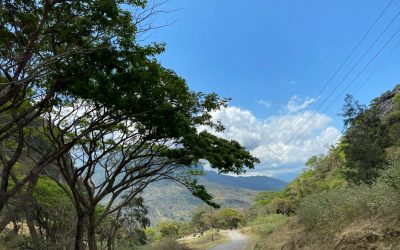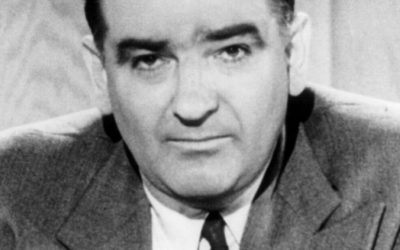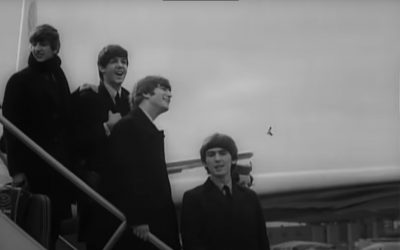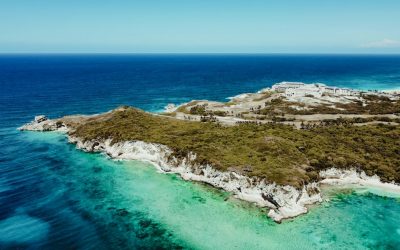Explore the World Through Geography, Natural Resources & Daily History
Clear, reliable and engaging guides that help you understand our planet — from UK geography education to global natural resources and On This Day history events.
Explore, discover, and learn about the wonders of our world! At Earth Site, we’re passionate about bringing geography, history, and science to life for curious minds of all ages. Whether you’re delving into historical events, uncovering the mysteries of the natural world, or seeking interactive resources, you’re in the right place.
Here, you can uncover the stories behind historical events, explore the natural wonders of our planet, and gain valuable insights into how the Earth’s systems shape our daily lives. From the towering peaks of mountain ranges to the far-reaching impacts of human innovation, we aim to make every topic both engaging and informative.
Start your journey of discovery with us today, and let’s make learning an adventure!
What We Cover
Earth Site brings together engaging and accessible educational content designed to help you understand the world, its history, and its natural systems.
🌍 Geography Education (UK & Worldwide)
We publish clear, easy-to-understand geography resources for students, teachers and curious learners. Our guides support geography education in the UK and cover physical geography, climate, ecosystems, population, and global development.
⛏️ Natural Resources & Environmental Geography
Explore detailed country profiles covering natural resources, mining, energy, geology and global environmental challenges. We show how nations manage minerals, water, land and ecosystems, and why these resources matter.
📅 On This Day in History
Every day has a story. Our On This Day history series features major events, anniversaries, traditions, and cultural milestones from around the world — with timelines, context, and fun facts.
TIMELINE
Discovering the Fascinating World of Dasyuromorphia: Meet the Quolls, Dunnarts, Numbats and Tasmanian Devils
Dasyuromorphia is an order of carnivorous marsupials native to Australia. These unique creatures are known for their sharp teeth, powerful jaws, and predatory nature. They are a diverse group, with several different species belonging to this order. Dasyuromorphia includes animals such as quolls, dunnarts, numbats, and Tasmanian devils. Summary Dasyuromorphia are carnivorous marsupials found in Australia with a diverse range of species. Quolls are cute but deadly predators that inhabit the bush and are known for their unique spotted fur. Dunnarts are tiny insectivores with a big appetite, consuming up to their own body weight in insects each night. Numbats are endearing termite eaters found in Western Australia and are one of the few diurnal marsupials. Tasmanian Devils are fierce fighters with a unique personality and are known for their loud screeching calls. Meet the Quolls: The Cute but Deadly Predators of the Bush Quolls are small to medium-sized marsupials that belong to the Dasyuromorphia order. They are known for their distinctive spotted fur and long tails. Quolls are skilled hunters and have a varied diet that includes insects, small mammals, birds, reptiles, and even fruits. They are nocturnal creatures and spend their days resting in dens or hollow logs. One interesting fact about quolls is that they have a unique way of hunting. They use their strong jaws and sharp teeth to deliver a fatal bite to their prey’s neck or head. This method ensures a quick and efficient kill. Quolls are also known for their ability to climb trees, which allows them to hunt for prey in both the ground and canopy levels of their habitat. Dunnarts:...
Exploring the Breathtaking Beauty of Ecuador: A Journey Through South America’s Hidden Gem
Ecuador, a small country located on the western coast of South America, is a hidden gem for travelers seeking diverse natural wonders. Despite its size, Ecuador boasts an incredible array of landscapes, from the pristine Galapagos Islands to the majestic peaks of the Andes Mountains and the lush Amazon Rainforest. In addition to its natural beauty, Ecuador is also rich in cultural heritage, with vibrant indigenous communities and charming colonial cities. Whether you’re an adventure seeker, a nature lover, or a history enthusiast, Ecuador has something to offer for everyone. Summary Ecuador boasts natural wonders such as the Galapagos Islands, Andes Mountains, Amazon Rainforest, coastline, and more. The Galapagos Islands offer a unique and pristine ecosystem with diverse wildlife. The Andes Mountains showcase majestic peaks and vibrant culture. The Amazon Rainforest provides a thrilling adventure into the wild. Ecuador’s cities, such as Quito, Cuenca, Otavalo, and Baños, offer a mix of history, art, adventure, and indigenous culture. The Galapagos Islands: A Unique and Pristine Ecosystem One of Ecuador’s most famous natural attractions is the Galapagos Islands, a group of volcanic islands located in the Pacific Ocean. The islands are renowned for their unique and diverse wildlife, which inspired Charles Darwin’s theory of evolution. Visitors to the Galapagos can witness up-close encounters with giant tortoises, marine iguanas, blue-footed boobies, and many other species found nowhere else on earth. In addition to wildlife spotting, there are plenty of activities and attractions to enjoy on the islands. Snorkeling and diving are popular activities, allowing visitors to explore the vibrant underwater world teeming with marine life. Hiking trails offer breathtaking views of volcanic...
Shining a Light on Neon: The Brightest Element in the Periodic Table
Neon, with its vibrant and captivating glow, is one of the most fascinating elements in the periodic table. It is a chemical element with the symbol Ne and atomic number 10. Neon is a noble gas, which means it is odorless, colorless, and tasteless. However, when an electric current is passed through it, it emits a bright orange-red light that is instantly recognizable. Neon gets its name from the Greek word “neos,” meaning new. It was named by Sir William Ramsay and Morris Travers, who discovered the element in 1898. Neon is the fifth most abundant element in the universe, but it is relatively rare on Earth. It is extracted from the Earth’s atmosphere through a process called fractional distillation of liquid air. Summary Neon is the brightest element in the periodic table. Neon was discovered in 1898 and has since been used in a variety of applications. Neon has unique properties, including its ability to glow without heat or electricity. Neon lighting has been used to illuminate signs and buildings for over a century. Neon continues to be used in science, medicine, industry, and art, with advancements and innovations in technology on the horizon. History of Neon: From Discovery to Modern Applications The discovery of neon can be attributed to Sir William Ramsay and Morris Travers, who were conducting experiments on liquefied air. They were able to isolate neon by removing all other gases from the liquefied air through a series of processes. This discovery marked the first time that a noble gas had been identified. In the early years after its discovery, neon was primarily used in...
Unlocking the Power of Data: How Linear Algebra is Revolutionizing Analytics
Linear algebra is a branch of mathematics that deals with the study of vectors, vector spaces, and linear transformations. It plays a crucial role in the field of analytics, as it provides the mathematical foundation for many important concepts and techniques used in data analysis, machine learning, and data science. In the world of analytics, linear algebra is used to represent and manipulate data in a structured and efficient manner. It allows analysts to perform complex calculations and solve problems that would otherwise be difficult or impossible to solve. By using linear algebra, analysts can uncover hidden patterns in data, make predictions, group similar data points together, and optimize processes. Key Takeaways Linear algebra is crucial in analytics for solving complex problems and uncovering hidden patterns in data. Matrices and vectors are the basic building blocks of linear algebra and are used to represent data in a structured way. Linear regression uses linear algebra to predict outcomes by finding the best fit line through data points. Principal component analysis reduces data complexity by identifying the most important features and grouping them together. Singular value decomposition uncovers hidden patterns in data by breaking it down into its component parts. The Basics of Linear Algebra: Understanding Matrices and Vectors Matrices and vectors are fundamental concepts in linear algebra. A matrix is a rectangular array of numbers or symbols arranged in rows and columns. It can be used to represent data sets or transformations. A vector, on the other hand, is a one-dimensional array of numbers or symbols. It can be used to represent quantities such as position, velocity, or temperature. In...
Exploring the Hidden Gems of East Timor: A Journey Through the Culture and Beauty of Timor-Leste
East Timor, officially known as the Democratic Republic of Timor-Leste, is a small island nation located in Southeast Asia. Despite its size, East Timor is a hidden gem that is worth exploring for its rich history, diverse culture, natural wonders, delicious cuisine, warm and welcoming people, traditional arts and crafts, adventure activities, and commitment to sustainable tourism. East Timor has a fascinating history and unique geography. It was colonized by the Portuguese in the 16th century and later occupied by Indonesia for over two decades. The country gained its independence in 2002 and has since been working towards building a stable and prosperous nation. East Timor is located on the eastern half of the island of Timor, with Indonesia occupying the western half. The country also includes the islands of Atauro and Jaco. There are several reasons why East Timor is worth visiting. Firstly, it offers a unique blend of cultures and traditions. The Timorese culture is influenced by both Portuguese and Indonesian cultures, resulting in a vibrant and diverse society. Secondly, East Timor is home to stunning natural attractions, including mountains, beaches, and marine life. Whether you enjoy hiking through lush forests or diving in crystal-clear waters, East Timor has something for everyone. Lastly, the people of East Timor are known for their warm hospitality and friendliness, making visitors feel welcome and at home. Summary East Timor is a hidden gem worth exploring for its rich culture, natural wonders, history, cuisine, people, arts and crafts, and adventure opportunities. Timor-Leste’s culture is a blend of traditions, reflecting its diverse history and influences from Portugal, Indonesia, and other neighbouring countries....
The Fascinating World of Chiroptera: Delving into the Lives of British Bats
British bats are a diverse and fascinating group of mammals that play an important role in the ecosystem. There are 18 species of bats that can be found in the United Kingdom, making it one of the most bat-rich countries in Europe. These nocturnal creatures are known for their ability to navigate and hunt using echolocation, a process in which they emit high-pitched sounds and listen for the echoes that bounce back from objects in their environment. Studying and understanding bats is crucial for several reasons. Firstly, bats are indicators of a healthy environment. Their presence or absence can provide valuable information about the state of ecosystems and the impact of human activities on biodiversity. Secondly, bats are important pollinators and seed dispersers, contributing to the reproduction and survival of many plant species. Lastly, bats play a vital role in pest control by consuming large quantities of insects, including agricultural pests. Summary British bats are a diverse and fascinating group of mammals that play an important role in the ecosystem. The life cycle of British bats involves birth, growth, and maturity, with some species living up to 30 years. There are many species of British bats, each with unique physical characteristics and behaviours. Bats are important for pollination, pest control, and maintaining a healthy ecosystem. Threats to British bats include habitat loss, climate change, and human interference, but conservation efforts are underway to protect them. The Life Cycle of British Bats: From Birth to Maturity and Beyond Reproduction and mating habits vary among different species of British bats. Most species mate in the late summer or early autumn, with...
The Red Scare: The Infamous Legacy of US Senator Joe McCarthy
The Red Scare was a period of intense anti-communist hysteria that swept through the United States in the late 1940s and early 1950s. It was fueled by fears of Soviet expansion and the spread of communism, both domestically and internationally. During this time, many Americans believed that communists were infiltrating the government, the entertainment industry, and other aspects of society. This fear led to a climate of suspicion and paranoia, with individuals being accused of being communists or communist sympathizers without evidence. One of the key figures in the Red Scare was Senator Joseph McCarthy. McCarthy rose to prominence in the early 1950s by making sensational claims about communist infiltration in the U.S. government. He used his position as chairman of the Senate Permanent Subcommittee on Investigations to conduct highly publicized hearings, where he accused numerous individuals of being communists or communist sympathizers. McCarthy’s tactics were often aggressive and bullying, and he relied on innuendo and unsubstantiated claims to make his case. Summary The Red Scare was a period of anti-communist hysteria in the US during the Cold War. Joe McCarthy was a senator who rose to power during this time, using fear and intimidation to accuse people of being communists. McCarthyism led to the Hollywood Blacklist, where many in the entertainment industry were targeted and blacklisted for their political beliefs. The Army-McCarthy Hearings ultimately led to McCarthy’s downfall, as his tactics were exposed and discredited. The legacy of McCarthyism includes a chilling effect on civil liberties and free speech, and serves as a cautionary tale about the dangers of political extremism. The Early Life and Political Career...
The Yalta Conference: Shaping the Post-WWII World
Introduction The Yalta Conference, held in February 1945, was a pivotal event in shaping the course of the post-World War II world. Held in the Russian resort town of Yalta, the conference brought together the leaders of the United States, the Soviet Union, and the United Kingdom to discuss the reorganization of Europe and the establishment of a new international order. This article explores the key outcomes of the Yalta Conference and its lasting impact on global politics. The Main Keyword: Yalta Conference The Yalta Conference marked a turning point in international relations. During this historic meeting, world leaders sought to address crucial issues that would shape the future of Europe and establish a lasting peace after the devastating effects of World War II. This article delves into the significance of the Yalta Conference and how it impacted the post-war world. The Context and Objectives of the Yalta Conference World War II: A shattered Europe in need of reconstruction Allied forces nearing victory over the Axis powers Establishing the groundwork for peace and stability Addressing the division of Germany and Eastern Europe’s fate The Key Decisions: A New World Order Division of Germany: Creation of four occupied zones controlled by the Allies Post-war borders in Eastern Europe: Soviet influence on Poland and recognition of the Soviet Union’s territorial gains Establishment of the United Nations: Promoting peace and cooperation among nations Declaration on Liberated Europe: Ensuring democratic elections and self-determination in Eastern European countries War crimes trials: Holding Nazi leaders accountable for their actions The Significance of the Yalta Conference The outcomes of the Yalta Conference shaped the post-war world...
Beatles arrived in New York to start their first tour of the United States
The Beatles are widely regarded as one of the most influential bands in music history. Their innovative sound, catchy melodies, and charismatic personalities captivated audiences around the world. The band’s first American tour in 1964 marked a pivotal moment in their career and had a profound impact on music history. This article will explore the significance of their first American tour and the lasting legacy it left behind. Summary The Beatles’ arrival in New York was a historic moment in music history. Beatlemania took over America as fans flocked to welcome the Fab Four. The Beatles’ first American tour was a milestone for British invasion bands. The Beatles’ journey from Liverpool to New York was a significant moment in their career. The Beatles’ impact on American culture during their first tour is still felt today. The Beatles’ Arrival in the Big Apple: A Historic Moment in Music History On February 7, 1964, the Beatles arrived at John F. Kennedy International Airport in New York City. Their arrival was met with a frenzy of media attention and fan excitement. Thousands of screaming fans gathered at the airport to catch a glimpse of their idols. The Beatles were greeted by a swarm of reporters and photographers, all eager to capture this historic moment. The media frenzy surrounding the Beatles’ arrival in New York City was unprecedented. The band’s popularity had been steadily growing in America, thanks to the success of their hit songs like “I Want to Hold Your Hand” and “She Loves You.” However, their arrival in the Big Apple catapulted them to a whole new level of fame. The...
Captain Bruce McCandless: The Man Who Defied Gravity
Introduction Captain Bruce McCandless was a pioneer and a true legend in the field of aerospace engineering. His remarkable accomplishments and groundbreaking innovations have left an indelible mark on the history of space exploration. In this article, we will delve into the life and achievements of Captain Bruce McCandless, shedding light on his unparalleled expertise, authority, and trust in the aerospace industry. Early Life and Education Born on June 8, 1937, in Boston, Massachusetts, Bruce McCandless had always been fascinated with the boundless sky above him. Growing up, he nurtured a deep passion for aviation and astral science. This insatiable curiosity led him to pursue a degree in aerospace engineering at the United States Naval Academy, where he excelled both academically and as an accomplished pilot. The Journey to NASA After graduating from the Naval Academy, McCandless embarked on a journey that would lead him to the National Aeronautics and Space Administration (NASA). His exceptional skills as a pilot and his relentless dedication to his craft caught the attention of NASA officials, who recognized his potential to contribute significantly to the field of space exploration. Breaking Barriers: The Untethered Spacewalk Captain Bruce McCandless cemented his place in history when he made the iconic untethered spacewalk on February 7, 1984. Strapped to the Manned Maneuvering Unit (MMU), he ventured out into the vast expanse of space, becoming the first human to navigate without the use of a tether. This breathtaking feat showcased McCandless’ remarkable expertise and fearlessness, pushing the boundaries of what was deemed possible. The Legacy of Innovation McCandless’ groundbreaking achievement opened new doors for space exploration and laid...
The Maastricht Treaties: The Birth of the European Union
Capital: Brussels Population (Estimated July 2012): 503,824,373 Area: 4,324,782km2 or 1,669,808mi2 Currency: Euro (€) Official Language: Bulgarian, Czech, Danish, Dutch, English, Estonian, Finnish, French, Gaelic, German, Greek, Hungarian, Italian, Latvian, Lithuanian, Maltese, Polish, Portuguese, Romanian, Slovak, Slovene, Spanish, Swedish Political Information: Official Religion: No Official Religion (Predominantly Christian, Muslim and Jewish population) Highest Mountain: Mont Blanc at 4,807m 15,770ft Largest River: Divisions: 26 countries: Austria, Belgium, Bulgaria, Cyprus, Czech Republic, Denmark, Estonia, Finland, France, Germany, Greece, Hungary, Ireland, Italy, Latvia, Lithuania, Luxembourg, Malta, Netherlands, Poland, Portugal, Romania, Slovakia, Slovenia, Spain, Sweden Introduction The Maastricht Treaties, signed in 1992, marked a significant turning point in European history. These treaties laid the foundation for the European Union, fostering increased economic integration, political cooperation, and the establishment of the euro as a common currency. In this article, we will delve into the key aspects and implications of the Maastricht Treaties, exploring how they have shaped the modern European Union. The Maastricht Treaties: A Path to Unity What were the goals of the Maastricht Treaties? The primary aim of the Maastricht Treaties was to create a framework for closer European integration, both economically and politically. These treaties sought to establish a single market, a common foreign and security policy, and ultimately introduce a single currency. With these objectives in mind, the Maastricht Treaties laid the groundwork for a union that transcended economic boundaries. Economic Integration: The Single Market One of the most significant outcomes of the Maastricht Treaties was the creation of the single market. This involved the removal of trade barriers, such as tariffs and quotas, between member states. As a result, goods, services, capital, and labor could flow freely throughout the European Union, stimulating economic growth and job creation. Political Cooperation: The European Union The Maastricht Treaties also marked the...
Discovering the Hidden Gems of the Dominican Republic: A Journey Through the Caribbean’s Best-Kept Secret
The Dominican Republic is a popular travel destination known for its stunning beaches, vibrant culture, and warm hospitality. However, beyond the well-known tourist spots lies a treasure trove of hidden gems waiting to be discovered. From its rich history and culture to its diverse landscapes and delicious cuisine, the Dominican Republic offers a wealth of experiences for adventurous travelers. Summary The Dominican Republic is home to hidden treasures waiting to be discovered. The country boasts a rich history and culture that is worth exploring. Natural wonders such as waterfalls and national parks are must-visit destinations. The Dominican Republic has some of the best beaches in the world. The local cuisine is delicious and should not be missed. The Rich History and Culture of the Dominican Republic The Dominican Republic has a fascinating history that dates back centuries. It was the first European settlement in the Americas and played a crucial role in the colonization of the New World. The country’s history is shaped by a mix of indigenous Taíno culture, Spanish colonialism, African influences from the slave trade, and more recent waves of immigration from Europe and the Middle East. One of the best ways to immerse yourself in the country’s culture is by visiting its many cultural attractions and events. The capital city of Santo Domingo is home to the Colonial Zone, a UNESCO World Heritage site that showcases the country’s colonial past. Here, you can explore historic buildings, cobblestone streets, and beautiful plazas. The Alcázar de Colón, once home to Christopher Columbus’ son Diego, is a must-visit for history buffs. Another cultural highlight is the annual Carnival...











